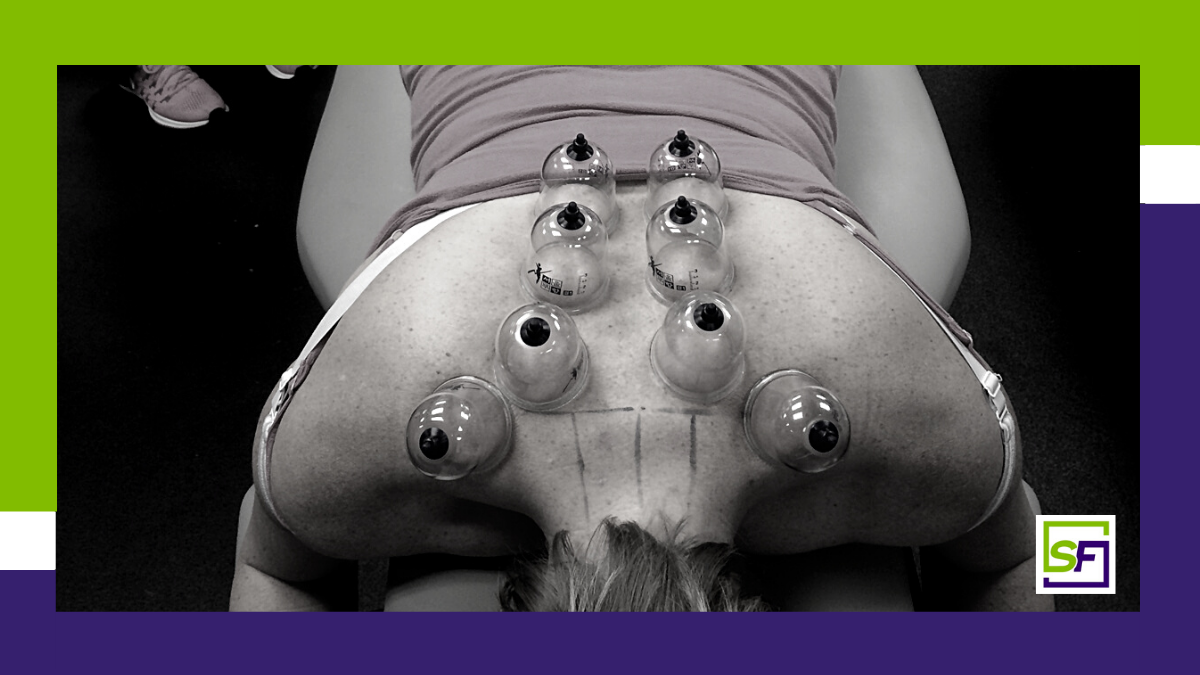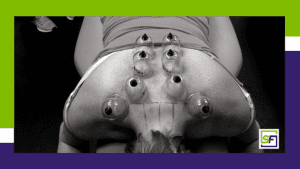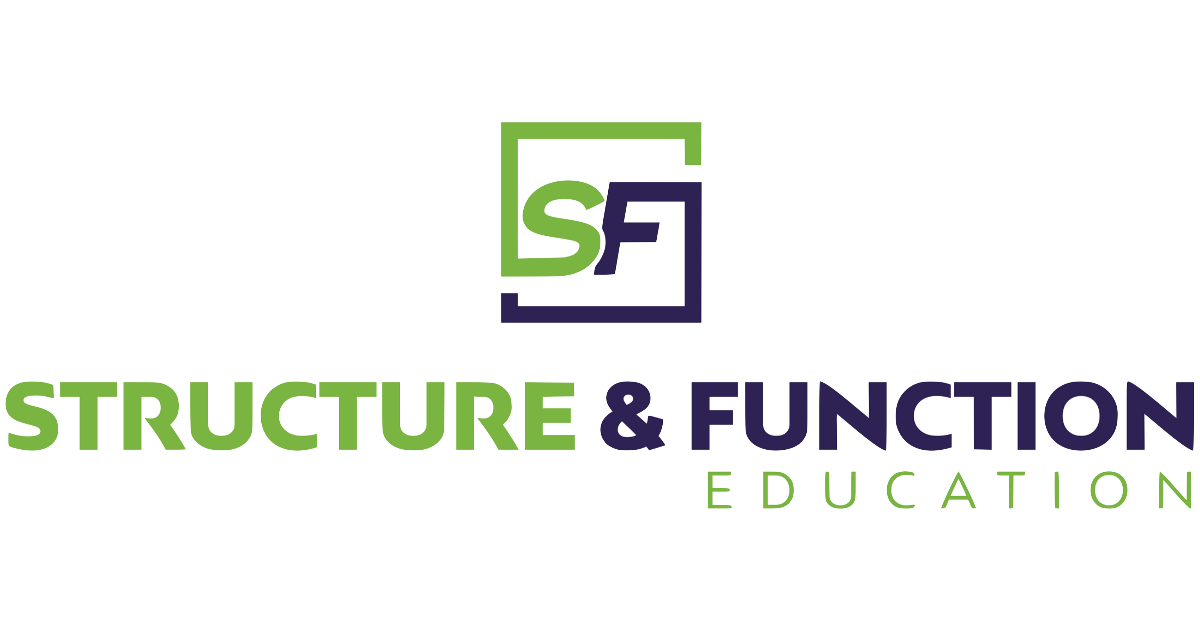
Cupping for Myofascial Dysfunction
Who is this course for?
The course “Cupping for Myofascial Dysfunction” will provide practitioners with a fundamental understanding of the physiologic effects of cupping and its utility to impact both rehabilitation and performance outcomes of their patients and clients. Clinical practice can be impacted by the use of three types of cupping techniques for better rehabilitation and performance outcomes.
Therapy practitioners should take this course if they would like to learn the fundamental understanding of cupping physiology, research, and clinical applications to better impact the rehabilitation and performance outcomes of their patients. Clinical practice can be impacted by the manipulation of the myofascial unit through cupping, providing practitioners with the understanding of a tool that can be used for better rehabilitation and performance outcomes.
As a therapist…
You are probably very comfortable talking about various modalities and their effects. But are you familiar with cupping’s effects on the body? The more you understand about how cupping impacts the body the better your outcomes will be.
We have many modalities that impact the myofascial structures. The more you understand the various ways you can use these different tools will help you make better choices as a clinician, based on your patient’s need. Cupping can be used for diffing types of myofascial manipulation. The more you understand these potential effects, the more you appreciate the versatility of this tool. Through the use of cupping, you can address circulatory issues, myofascial pain, myofascial densification, and fibrosis. It will truly become a game-changer in your clinical practice.
Are you dealing with patients who are experiencing pain and movement dysfunction?
Do you have clients who have low back or neck pain? Learn how Cupping for myofascial dysfunction describes the evidence on pain reduction through cupping.
Do you have clients who have mobility issues and ROM restrictions? Learn how Cupping for myofascial dysfunction describes the evidence on treating these myofascial dysfunctions through cupping.
Do you want to learn ways to improve the results with a better understanding of cupping?
- Understand the effects of cupping on myofascial tissues, and how it impacts pain and movement.
- Understand how cupping impacts the circulatory system in areas of overtraining or chronic stress.
- Learn and apply concepts of Young’s Modulus to increase ROM and mobility.
Learn about…
- The evidence base for cupping through a review of case studies, randomized control trials, and systematic reviews.
- How cupping decreases pain.
- How Cupping impacts the Young’s Modulus of the myofascial structures.
This course is for you if you are you looking to…
Understand the literature on cupping’s effectiveness in managing pain? Modules 2 & 3 shows you how.
Understand how cupping impacts the circulatory system? Module 4 shows you how.
Understand the clinical considerations and applications of cupping techniques? Module 6 & 7 shows you how.
Your instructor Brian will discuss…
- How effective is cupping for pain management?
- How cupping affects the body.
- When to use cupping for differing clinical outcomes.
Do you need CEU credits but can’t find the time to go to a class
Let online education help you out!
Learn at your own pace, in your ideal environment!
You’re a busy professional. You need to balance your career, home life and find time to continue your education.
As long as you have Internet access you can access the course from anywhere.
Advance your career in areas of focused study, geared towards your personal learning goals.
Becoming an expert takes time. It takes continuous study and practice. When you gain knowledge you are advancing your professional career. Online learning gives you the opportunity to focus on the skills you need.
Topics that you enjoy.
Select topics that interest you. Topics that you find fascinating. Online distance learning allows you to find topics that might not be available locally.
Learn at your own pace.
Everyone has their own rhythm. Some people only need to hear a lecture once and take perfect notes, while others might need to listen more than once. Online learning gives you the option to repeat a lecture for maximum affect.
Are there Continuing Education Units (CEU)?
Full Course description
What will you learn as a student in this Course?
- Evidence of cuppings effects based on the literature
- Pain theories postulated to explain cupping effects
- Evidence of the physiologic mechanism’s relative to microcirculation and blood flow
- Evidence of the physiologic mechanism’s relative to fascial densification, fascial fibrosis, and fascial elasticity
- Three differing techniques used when cupping:
- static cup/static body
- dynamic cup/static body
- static cup / dynamic body
- Learn by watching video demonstrations of many techniques on various anatomic areas
What’s included in this course?
- 7 lessons including, 2 hours of video
- A complete downloadable transcript for you to follow along.
- 9 article readings
- Course Completion quiz
Reading materials
All reading materials are downloaded through PubMed free PMC.
- Al-Bedah AMN, Elsubai IS, Qureshi NA, et al. The medical perspective of cupping therapy: Effects and mechanisms of action. J Tradit Complement Med. 2018;9(2):90‐97. Published 2018 Apr 30. doi:10.1016/j.jtcme.2018.03.003
- Mehta P, Dhapte V. Cupping therapy: A prudent remedy for a plethora of medical ailments. J Tradit Complement Med. 2015;5(3):127‐134. Published 2015 Feb 10. doi:10.1016/j.jtcme.2014.11.036
- Escaloni J, Young I, Loss J. Cupping with neural glides for the management of peripheral neuropathic plantar foot pain: a case study. J Man Manip Ther. 2019;27(1):54‐61. doi:10.1080/10669817.2018.1514355
- Cage, Stephen A.; Gallegos, Diana M.; and Warner, Brandon J. (2017) “Utilization of Cupping Therapy in the Treatment of Vascular Thoracic Outlet Syndrome in a Collegiate Pitcher: A Case Study,” Journal of Sports Medicine and Allied Health Sciences: Official Journal of the Ohio Athletic Trainers Association: Vol. 3 : Iss. 2 , Article 2. DOI: 10.25035/jsmahs.03.02.02 Available at: https://scholarworks.bgsu.edu/jsmahs/vol3/iss2/2
- Ge W, Leson C, Vukovic C. Dry cupping for plantar fasciitis: a randomized controlled trial. J Phys Ther Sci. 2017;29(5):859‐862. doi:10.1589/jpts.29.859
- Kim S, Lee SH, Kim MR, et al. Is cupping therapy effective in patients with neck pain? A systematic review and meta-analysis. BMJ Open. 2018;8(11):e021070. Published 2018 Nov 5. doi:10.1136/bmjopen-2017-021070
- Chi LM, Lin LM, Chen CL, Wang SF, Lai HL, Peng TC. The Effectiveness of Cupping Therapy on Relieving Chronic Neck and Shoulder Pain: A Randomized Controlled Trial. Evid Based Complement Alternat Med. 2016;2016:7358918. doi:10.1155/2016/7358918
- Kim JI, Lee MS, Lee DH, Boddy K, Ernst E. Cupping for treating pain: a systematic review. Evid Based Complement Alternat Med. 2011;2011:467014. doi:10.1093/ecam/nep035
- Gao C, Wang M, He L, He Y, Li T. Alternations of hemodynamic parameters during Chinese cupping therapy assessed by an embedded near-infrared spectroscopy monitor. Biomed Opt Express. 2018;10(1):196‐203. Published 2018 Dec 12. doi:10.1364/BOE.10.000196
Register Now for this course
Meet Your Instructor(s)
Pricing Information
Monthly Subscription
$ 19.99 Monthly- Total cost $240 per year.
- 3-day free trial!
- Monthly membership.
- Cancel any time!
- Access to all online classes!
- Access to class discussions.
- Access to the subscriber only community.
- Live Q&A sessions with Sue, Brian and other S&F Education instructors.
Annual Subscription
$ 199.00 Annually- Save $40 over the monthly cost
- 3-day free trial!
- Yearly membership.
- Cancel any time!
- Access to all online classes!
- Access to class discussions.
- Access to the subscriber only community.
- Live Q&A sessions with Sue, Brian and other S&F Education instructors.
Satisfaction Guarantee
If you aren’t satisfied with the course within the first 30 days after your first payment but before you have taken the final exam, you can get a refund. We’ll cancel the course immediately upon your refund request and issue the refund to your credit card though our processor Stripe.
Frequently Asked Questions
How is the course delivered?
The course is a series of video lectures and readings. The student is allowed to proceed at their own pace. The is an exam at then end that the student needs to pass.
How soon can I use the techniques learned in my practice?
You can use it immediately after passing the exam.
How long do I have access to the course?
One time purchases of the course will have full access to the course for 12 months starting on the date of purchase. Membership Subscribers have access until the end of the current subscription period.
P.S.
If you want to learn how cupping affects the body and its clinical utility this course is for you.
Cupping for Myofascial Dysfunction

The “Cupping for Myofascial Dysfunction” course provides practitioners with a fundamental understanding of the physiologic effects of cupping and its utility to impact both rehabilitation and performance outcomes of their patients and clients. Clinical practice can be impacted by the use of three types of cupping techniques for better rehabilitation and performance outcomes.
Course Provider: Organization
Course Provider Name: Structure & Function Education
Course Provider URL: https://structureandfunction.net/online-courses/cupping-for-myofascial-dysfunction/
Course Mode: Online
Course Workload: PT5H
Duration: PT5H
Repeat Count: 1
Repeat Frequency: Daily
Course Type: Paid
Course Currency: USD
5


